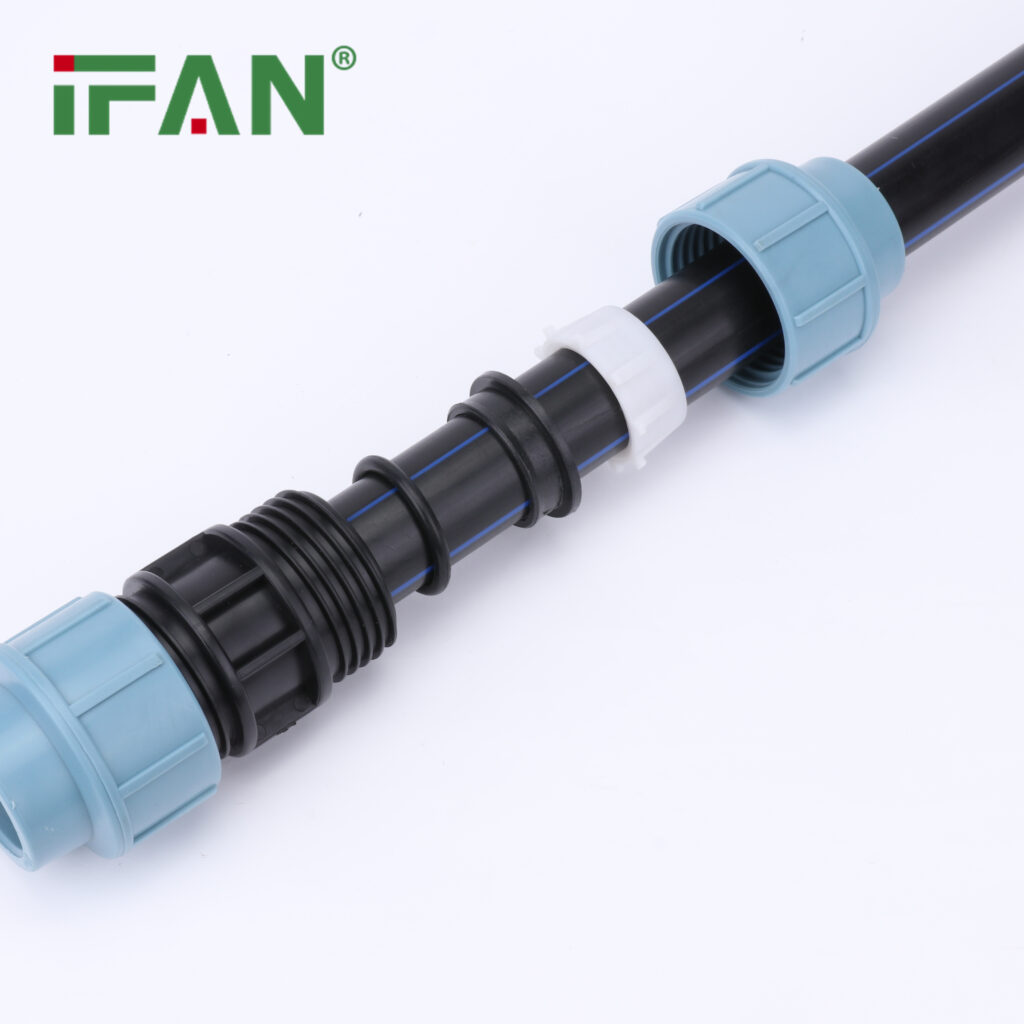HDPE Electrofusion Fittings
Creating Strong Bonds for High-Density Polyethylene Piping Systems
High-density polyethylene (HDPE) piping relies on properly joined fittings and components to create complete pressurized fluid systems. Electrofusion produces high-integrity HDPE joints suitable for critical service. This article explores HDPE electrofusion fittings.IFAN factory with 30+ years of manufacturing experience supports color/size customization and free samples. Welcome to consult for catalog and free samples. This is our Facebook Website: www.facebook.com.

What are HDPE Electrofusion Fittings?
HDPE electrofusion fittings provide connectors like elbows, tees, saddles, couplers, and adapters containing integral coils or rings of wire. Applying a specified electrical voltage to the coils generates precise heat that melts and fuses the HDPE materials together in a permanent joint.
The electrofusion process creates leak-free, full-strength bonds between HDPE piping and fittings without requiring external heat sources or support equipment. The joints demonstrate equivalent or greater strength compared to the base HDPE pipe material.
Key Applications of HDPE Electrofusion Fittings
The convenience and reliability of electrofusion make the fittings ideal for:
- Tapping new service lines into existing HDPE headers and water mains.
- Making connections in confined spaces without butt fusion equipment.
- Joining sections of HDPE pipe into networks and arrays.
- Integrating HDPE piping with other materials using junction adapters.
- Repairing damaged sections of the HDPE pipeline by adding fittings.
Electrofusion produces permanent joints regardless of environmental conditions. The process does not require precise alignment or beveling compared to butt or socket fusion.
Advantages Over Other HDPE Joining Methods
HDPE electrofusion fittings offer advantages versus mechanical couplings or other heat fusion methods:
- Creates full circumferential fusion bonds without weak points.
- Does not require large tools or equipment on site.
- The fast fusing process requires only a power source.
- Bonds dissimilar HDPE dimensions and SDR thicknesses.
- Suitable for field jointing repairs and additions.
- Allows joints in wet or dirty areas, unlike heat fusion.
- Training requirements are minimal compared to manual welding.
The simplicity and reliability of properly electrofused joints provide benefits spanning municipal, industrial, and geothermal applications.
How Electrofusion Bonding Works
Creating a joint using HDPE electrofusion fittings involves these basic steps:
- The pipe ends get cleaned, chamfered, and inserted into the electrofusion fitting sockets.
- An electrical source connected to the wire coils heats them precisely to the material melt point.
- Molten HDPE from the pipes and fitting intermixes and solidifies under ideal pressure into a monolithic bond.
- After cooling, the permanent joint demonstrates full pipe strength and integrity.
Fusion occurs from inside the joint outward, minimizing the potential for leaks or flaws. The process works reliably for both new piping as well as repairs.
Equipment Needed for HDPE Electrofusion
Electrofusion of HDPE requires just a few specialized pieces of equipment:
- The fitting fusion unit provides an adjustable voltage to match project conditions.
- Scrapers and cloths prepare pipe surfaces for maximum bond strength.
- Pipe cutters make square cuts to allow proper insertion depth into the fitting socket.
- Slip-check gauges confirm full insertion before fusing.
- Chamfer tools bevel the pipe ends to easily enter the socket.
- Weather shelters enable fusing in wet, windy, or cold conditions.
The simplicity of the equipment allows for mobile HDPE pipe joining operations from manholes to remote sites. Training provides essential knowledge on safety and procedures.
HDPE Electrofusion Fitting Design Factors
Fitting engineers consider these key elements in designing electrofusion products:
- Coil or disc geometries to distribute heat evenly into the joint
- Optimal melt time and temperature protocols
- Material formulations tailored for elevated fusion temperatures
- Durable wire insulation and routing within the fitting
- Geometry supporting necessary pipe penetration depth
- Minimal void space for maximum pipe contact
International standards guide electrofusion fitting development to produce consistent bonding and performance.
Quality Assurance and Testing
Stringent manufacturing quality controls and testing ensure electrofusion fitting integrity:
- Consistent dimensional accuracy avoids joint misalignment
- Electrically tested coils confirm designed resistance and continuity
- Pressure testing screened for any leakage or damage
- Production lot traceability allows tracking component history
- Raw materials, processes, and quality audits of suppliers
- Conformance to ASTM, ISO, and industry electrofusion standards
Rigorous quality control delivers electrofusion fittings that meet the demands of mission-critical piping systems and fulfill code requirements.
With strong, convenient joints and connections, HDPE electrofusion fittings enable the creation of integrated polyethylene piping networks and the realization of the benefits of HDPE across a wide range of markets.
IFAN
IFAN factory started in 1993. And IFAN has a workshop of 120000 square meters with 610 staff. IFAN can design and produce all plumbing pipe and fitting including PPR, PVC, CPVC PPSU HDPE PEXA PEXB PERT pipe and fitting, brass fitting, brass ball valve, heating system, gas system, sanitary faucets, and hose, In the past 30 years, IFAN has never forgotten his mission-To protect health and safety. And IFAN factory uses the best materials to produce high-quality pipe and fittings with an automatic production line and high-tech quality control machines.

